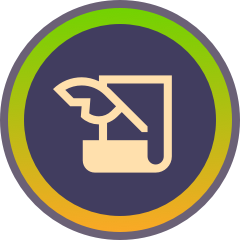- Let's look at the future of commercial transport.
- Technology
- Thursday, 20 February 2025
- 158
The landscape of commercial transport is evolving rapidly, driven by technological advancements, sustainability goals, and the need for greater efficiency. Below is an overview of developments currently underway and future concepts that are...
MoreThe landscape of commercial transport is evolving rapidly, driven by technological advancements, sustainability goals, and the need for greater efficiency. Below is an overview of developments currently underway and future concepts that are shaping the commercial transport sector as of February 20, 2025. These insights are drawn from ongoing trends and innovations widely discussed in industry analyses and forward-looking projections.
Developments Underway in Commercial Transport
Electrification of Vehicles
Electric Trucks and Vans: Companies like Tesla (with its Semi), Rivian, and Volvo are advancing electric heavy-duty trucks for freight transport. These vehicles aim to reduce carbon emissions and operational costs, leveraging improvements in battery technology for longer ranges (e.g., Tesla Semi’s claimed 500-mile range).
Last-Mile Delivery: Electric vans and smaller vehicles, such as those used by UPS and Amazon, are being deployed for urban deliveries, supported by expanding charging infrastructure and government incentives for zero-emission zones in cities.
Public Transit: Electric buses are increasingly common, with cities like Shenzhen, China, having fully electrified their bus fleets, and manufacturers like BYD and Proterra scaling production globally.
Autonomous Vehicles
Self-Driving Trucks: Companies like Waymo, TuSimple, and Aurora are testing autonomous trucks for long-haul transport. For example, TuSimple has completed pilot runs hauling goods across states, reducing human error and driver fatigue.
Robotaxis and Shuttles: Urban areas are seeing trials of autonomous shuttles and taxis (e.g., Waymo’s services in Phoenix and Cruise in San Francisco), aiming to optimize traffic flow and reduce labor costs.
AI Integration: Advanced driver-assistance systems (ADAS) with AI, including lane-keeping and adaptive cruise control, are becoming standard in commercial fleets, paving the way for full autonomy.
Drone Delivery Systems
Short-Distance Logistics: Amazon Prime Air, UPS Flight Forward, and Wing (Alphabet) are expanding drone delivery trials, focusing on last-mile solutions for lightweight goods. These systems promise faster delivery times and reduced road congestion, with FAA approvals advancing in the U.S.
Medical and Emergency Use: Drones are being used to transport medical supplies (e.g., Zipline in Rwanda and Ghana), demonstrating reliability in time-sensitive scenarios.
High-Speed Rail Expansion
Maglev Trains: China’s maglev trains, capable of speeds up to 370 mph (600 km/h), are being refined, with new lines under construction. Japan’s Chuo Shinkansen, set to open in the 2030s, will connect Tokyo and Nagoya at similar speeds.
European Networks: Projects like the EU’s Rail Baltica and Spain’s AVE network are enhancing cross-border freight and passenger transport with high-speed, electrified rail.
Smart Infrastructure
Connected Roads: Companies like Integrated Roadways are developing “smart roads” with embedded sensors and communication networks to relay real-time data to vehicles, improving traffic management and safety.
IoT in Logistics: Internet of Things (IoT) devices are optimizing fleet management through real-time tracking, predictive maintenance, and route optimization, adopted by firms like DHL and FedEx.
Sustainable Fuels
Hydrogen Power: Hydrogen fuel cell trucks (e.g., Nikola and Hyundai) are being tested for long-haul transport, offering zero-emission alternatives with faster refueling than batteries.
Biofuels and Synthetic Fuels: Shipping and aviation industries are exploring sustainable aviation fuels (SAF) and biofuels, with companies like Maersk committing to carbon-neutral shipping by 2050.
Concepts of Future Commercial Transport
Hyperloop Systems
Description: Hyperloop involves pods traveling through near-vacuum tubes at speeds exceeding 700 mph (1,100 km/h) using magnetic levitation. It aims to revolutionize intercity freight and passenger transport.
Progress: Virgin Hyperloop has conducted human tests, and projects are proposed for routes like Los Angeles to San Francisco or Mumbai to Pune (reducing travel time from hours to minutes). Challenges include high infrastructure costs and regulatory hurdles.
Potential: Could connect economic hubs, enabling rapid goods movement and commuter travel.
Flying Taxis and Urban Air Mobility (UAM)
Description: Electric vertical takeoff and landing (eVTOL) aircraft, or “flying taxis,” promise short-range urban transport, bypassing ground congestion.
Players: Joby Aviation, Archer, and Lilium are developing eVTOLs with ranges of 150–200 miles and speeds up to 200 mph. Uber Elevate (now partnered with Joby) targets commercial rollout by the late 2020s.
Vision: Airports-to-city-center transfers, regional cargo delivery, and urban passenger services, with zero-emission electric propulsion.
Autonomous Ships
Description: Fully autonomous cargo ships use AI to optimize routes, avoid obstacles, and reduce crew costs, with green proPost is under moderationStream item published successfully. Item will now be visible on your stream.
MOTORWATT ⚡ Green Energy Community





